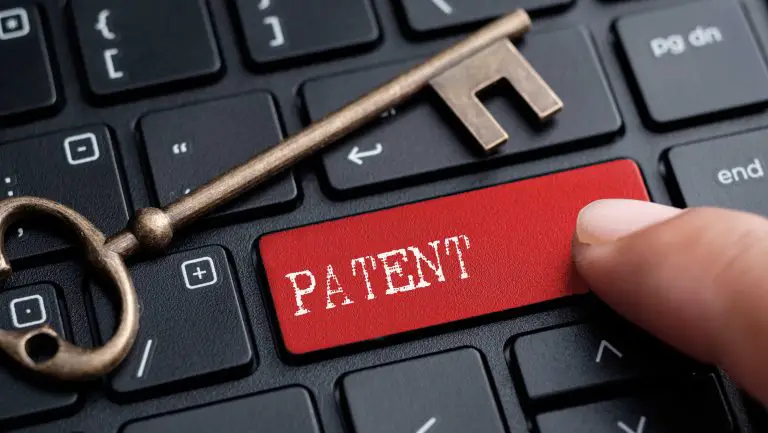What is Patent Novelty?
If you have a great invention or design that you want to patent you probably heard that your invention has to be novel in order for it to qualify for a patent. We will explain the novelty requirement in great detail below.
What is Patent Novelty?
For an inventor to be able to obtain a patent, he must show, among other things, that his invention is novel (new). The novelty requirement prohibits inventors from patenting inventions that have been patented in the past or inventions that an inventor has publicly disclosed, offered for sale, or sold more than one year prior to filing a patent application with the USPTO.
Said differently, if you want to patent an invention, you cannot patent something that has already been patented or an invention that you have publicly disclosed more than one year prior to filing a provisional or nonprovisional patent application.
The novelty requirement was added to prevent people from patenting the same inventions over and over again. If an inventor publicly disclosed his invention or offered it for sale more than one year prior to filing a patent application, he will not be allowed to patent it because the patent office considers it as prior art that prohibits patenting it.
So, does your invention pass the novelty test?
To determine whether your invention passes the novelty test, you should hire an attorney to perform a patent search (commonly known as a prior art search or a novelty search) and a search of public databases to determine whether someone has already disclosed or patented the invention you want to patent.
When conducting a prior art search, your attorney will do his best to prove that your invention is not new. Approaching a search this way allows your attorney to document similar inventions and discuss the differences (if any) between them and your invention.
Attorneys typically perform a prior art search by performing a search of the patent database and all relevant publications. For example, if you want to patent a glucose-measuring medical device, your attorney will search medical publications that discuss new glucose measuring technology.
That said, no prior art search is perfect, sometimes an attorney’s search will not turn up any prior art even after a patent is granted.
So, once you’ve satisfied novelty, what else do you need to show to patent your invention?
In addition to the novelty requirement, an inventor must show that his invention has patentable subject matter, is nonobvious, and serves some useful purpose. The two most difficult requirements to satisfy are invention novelty and nonobviousness. Now that you know what novelty is, what’s nonobviousness?
Nonobviousness requires an inventor to show that his invention was nonobvious at the time he filed his patent application. That is, the inventor has to show that an ordinary person, experienced in the field of the invention would not believe the invention to have been obvious.
For example, if you’re developing a new drug that promises to cure cancer by combining new and unique ingredients that have never been combined before, you have a pretty good shot at satisfying the nonobviousness requirement.
That said, this is just an example we used to illustrate the nonobviousness requirement, your invention does not have to be this nonobvious to qualify for a patent, nevertheless, it has to satisfy this requirement.
Now back to patent novelty, why is it important? Read below to find out.
Why is Patent Novelty Important?
Patent novelty is important because it prevents people from re-patenting inventions that were already patented. Just imagine a world where a patent on an invention expires and another party patents the same invention. Patents on inventions would last forever.
This is why we have a novelty requirement, to prevent patents from lasting indefinitely. This frees up technology and allows inventors to improve upon technology that was once patented.
The second benefit of having a patent novelty requirement is that it prevents others from patenting inventions that have already been disclosed to the public. For example, if you publish new battery technology in a car magazine, others won’t be able to patent it after you’ve published it because it’s considered as prior art that prevents patenting publicly disclosed inventions.
How Do You Keep Your Invention Novel?
If you don’t want your invention to become prior art, here are a few tips:
- Don’t discuss your invention with anyone, including friends and family
- Don’t publish your invention on any websites, magazines, or journals
- Don’t offer your invention for sale
- If you need to talk about your invention with anyone have them sign a confidentiality agreement
- Don’t sell your invention
Now that you know what you shouldn’t do to keep your invention novel, what if someone discloses your invention?
If someone publicly discloses your invention, you should immediately prepare and file a patent application with the patent office. Filing a provisional patent application is a quick way to protect your invention by obtaining an early filing date.
Once you have a filing date, anyone else who submits a patent application to the patent office after you’ve filed a patent application won’t be able to patent the same invention.
Confidentiality Agreement
If you need the assistance of anyone with your invention and you’re still not ready to file your patent application, consider having a party sign a confidential agreement before disclosing your invention to them. By having them sign a confidentiality agreement, you’re not publicly disclosing your invention.
That said, confidentiality agreements are not perfect because sometimes a party to an agreement may not keep your invention confidential. So, if someone discloses your invention, you should immediately contact an attorney and ask them about filing a provisional application to secure a filing date for your invention.
Securing a filing date is really important in the U.S because it uses a “first to file system” that awards the patent to the first person who files a patent application with the USPTO. So, it’s best to contact a licensed patent attorney and ask them about the option of filing a provisional application.
Filing a Provisional Application
Inventors often choose to file a provisional patent application instead of filing a regular, nonprovisional utility patent application to protect their invention because provisional applications are much easier to prepare and file, they’re also a lot less expensive than nonprovisional applications.
Provisional applications are great in the U.S because they allow inventors to secure an early filing date for their invention while they continue to work on their invention.
While the patent office allows inventors to prepare and file provisional patent applications on their own, they do recommend that applicants hire a patent attorney to assist them. They make this recommendation because patent law is complex and making minor mistakes could cause costly problems down the road.
One thing to note is that provisional applications do not turn into patents, so if you file a provisional application to secure an early filing date for your invention, remember that you need to file a nonprovisional utility application to patent your invention.
That said, once you file a provisional application, you have 12 months to file a regular patent application. If you don’t file a regular, nonprovisional application within the 12 month grace period, your application will be abandoned and you will lose the benefit of your early filing date, so don’t forget to file a regular application!
Check out this awesome, straightforward guide to filing a provisional patent application.
That said, before filing a provisional patent application, you may want to speak to your attorney and ask them about how you should proceed with protecting your invention.
Novelty Abroad
You may or may not know that a patent issued by the USPTO (United States Patent and Trademark Office) only protects inventors in the United States. That is, an inventor can only restrict others from using, making, selling, and importing the invention to the United States.
A U.S patent does not offer protection in countries other than the U.S. So, if you want protection abroad, you will need to file a patent application in the country where you want protection.
Other countries aren’t as forgiving as the United States. The U.S gives inventors a 12 month grace period to file a patent application after disclosing their invention, other countries require absolute novelty, meaning that the invention has never been disclosed or offered for sale.
Many European countries require absolute novelty, meaning that if the inventor or any other party publicly discloses the invention anywhere in the world, the inventor will be barred from patenting his invention.
So, if you anticipate that you want protection overseas, make sure that you do not disclose your invention to anyone, as disclosing it make cost you the opportunity to patent your invention.
Novelty Requirement to Patent an Invention
At this point, you should know that to patent your invention or design, it must be novel, meaning that your invention has never been publicly disclosed by you or others. Also, you must not have sold or offered the invention for sale more than 12 months prior to filing a patent application with the patent office.
That said, if you want to protect your invention, research the patent laws where you want to patent your invention because some countries don’t allow any disclosure of the invention before patenting it. If you have any general questions or comments, please feel free to leave them in the comments section below.







